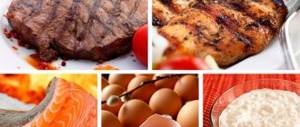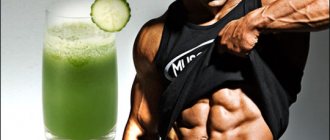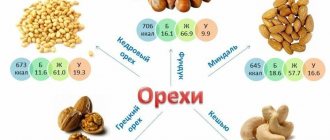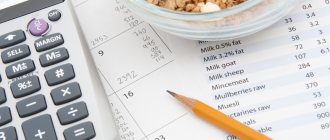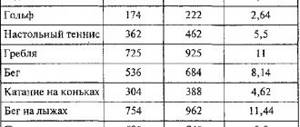What does 20g of fat look like?
Ah, fats! The most delicious macronutrient and the one that everyone considers the most harmful. However, this is not quite true. Contrary to popular belief, fats are not your enemy ! Let's work together to restore the reputation of fats and learn how to easily add a serving of healthy fats to your diet.
In a traditional bodybuilding diet, fat is avoided because fat is particularly high in calories . You'll get 9 calories per gram of fat , which is more than double the amount of calories you can get from carbohydrates and protein. Thus, for bodybuilders who need to watch their calorie intake, fat is not always appropriate. Other people who don't need to track their caloric intake with such precision rely on outdated food pyramids that have always taught us that we need to worry about fat.
Low-fat diets eliminate meat and cheese from the diet, and favor low-fat or no-fat snacks . Although low-fat foods are slowly losing their luster, the word "fat" still raises a lot of questions.
Long-term studies
As mentioned above, our body is a very smart, and most importantly, economical system that can digest large amounts of food.
In a 2-week study (Arnaletal), there was no difference in lean mass or nitrogen retention (nitrogen balance is what determines whether we gain or lose muscle) between subjects who ate about 80% of their daily protein needs (average 54 grams). per day, the study was conducted on women with an average lean body mass of 40.8 kg.) per meal and those who divided the same amount of protein into 4 meals.
Considering that most training men have significantly more muscle mass than the women who took part in the experiment, it is likely that our body is able to digest more than 54 grams of protein per meal and use it to build muscle .
If the same 1.67 gr. protein per 1 kg. body weight applied to an adult male, we get about 95 or more grams of protein, which is 3 times higher than the upper limit of protein intake of 30 grams, which is spoken about by fitness enthusiasts who do not understand the issue.
What does 30g of protein look like?
Do you want to build muscle mass and get rid of excess fat? Then you need protein! We'll show you how much to consume and how to know the right amount.
A protein is a molecule made up of amino acids . It is an important component of every cell in the body. Our hair and nails are made of protein, but protein is also important for the creation and regeneration of muscle mass, bones, organs, blood and even skin. For people who are interested in fitness, proteins are of particular importance because they are important components of the muscle building process.
According to research, the best way to get enough protein through food is to eat 20-30 grams of protein at each meal . 1 We think this is useful advice. But how do you weigh 30 grams of protein? Not everyone can tell by sight , but no one wants to constantly monitor the labels and nutritional values of every meal for the rest of their lives. Here's what 30 grams of protein from conventional sources :
Bacon
Nutritional information for 7 large pieces:
• 428 kcal • 1.1 g carbohydrates • 33 g fat • 29.3 g protein
Although bacon is a widely recognized food that contains protein , it is also high in calories and contains many unsaturated healthy fats. In fact, it has almost the same proportion of protein and fat . If you're trying to keep that weight off or lose a few pounds, eating 7 pieces of bacon with an egg white is probably not the best option.
Hard boiled eggs
Nutritional value of 5 large eggs:
• 388 kcal • 2.8 g carbohydrates • 26.5 g fat • 31.5 g protein
Eggs are excellent sources of protein . They are a great choice if you can't bring yourself to eat chicken breast anymore. When trying to limit your calorie intake, you can still eat only whites, but you'll need about 8 eggs to get the same amount of protein .
Ground beef
Nutritional value per 114 g:
• 218 kcal • 0 g carbohydrates • 8.6 g fat • 33 g protein
Beef can be a great choice for your diet. Although it has more fat and therefore more calories than chicken breast, beef provides slightly more protein and even iron .
Tempe
Nutritional value per 170 g: • 333 kcal • 15.9 g carbohydrates • 19.4 g fat • 30.9 g protein
Tempeh is a soy product that, in addition to protein and fat, will provide your body with a healthy dose of magnesium, iron and vitamin B6 . Despite what you may have heard, there is not enough evidence that soy will increase estrogen levels. 2
Whey Protein
Nutritional value of 1 scoop:
• 170 kcal • 6 g carbohydrates • 2.5 g fat • 30 g protein
Protein is probably the most effective source of protein . If you are trying to get enough protein without eating a lot of chicken breasts every day, or are trying to reduce the number of calories you consume and want to still get your protein in, then 1 scoop or 2 may work just fine. It is also beneficial to take protein immediately after your workout.
Tofu
Nutritional value per 3/4 piece:
• 278 kcal • 49.3 g carbohydrates • 4.4 g fat • 10.2 g protein
If you're not one of those meat eaters or just want to treat yourself to another source of protein, try tofu. Tofu is made from soybeans and contains many healthy fats and proteins . It is also a complete protein, meaning that it contains all the essential amino acids needed for proteosynthesis.
Chicken breast
Nutritional value per 114 g:
• 164 kcal • 0 g carbohydrates • 5.2 g fat • 29.2 g protein
Chicken breast is an important element in bodybuilding, and for good reason. Chicken breast is high in protein without many carbs or calories, but low in fat . Breast meat is also a good source of potassium and vitamin B6.
How many grams of protein are in a banana?
The calorie content of a banana is 89 kcal, and its composition is as follows: the answer to the question “how many grams of protein are in a banana?” – 1.5 g; fat – 0.1 g; carbohydrates - 22.1 g. But much more important than how much protein is contained in a banana, what kind of proteins can be gleaned from there. Banana contains the protein tryptophan, which is converted into serotonin. This protein helps improve the overall tone of the body, improve mood, overcome various moral traumas, and helps you simply relax and feel happy. This is the reason for the slight euphoria, uplifting spirit, after just 1 banana eaten. However, we can carry out a procedure for “enriching” a banana with protein. To do this, you need to eat not 4 fresh, but 4 dried bananas per day.
Just two bananas, and the person received an energy supply for an hour and a half! It is not for nothing that tennis and football players refresh themselves with bananas during breaks in matches. According to this indicator, only the champion is ahead of it - avocado.
The idea that a banana is a purely carbohydrate product is too firmly established in our heads. How much energy and protein does a banana have? Banana has a fantastic amount of energy. In this event he is the vice-champion.
But an avocado is a bland fruit, which cannot be said about a banana. Bananas contain natural sugars, namely sucrose, glucose, fructose, and are very rich in fiber. It contains vitamins and minerals, of which potassium is especially noteworthy. Bananas are recommended by doctors for patients with diabetes and heart disease, to strengthen the heart muscle and increase the overall tone of the body.
What if you like it?
Due to the evaporation of the liquid, the protein content in them will approach the general daily human norm - 20 grams. In many countries of South America, where the poverty of large sections of the population does not allow frequent consumption of meat, bananas are fried, increasing their protein content by 2.5 times. Try to cook this dish too.
How much protein is in a banana? Banana is the golden fruit of the banana palm, comes from Southeast Asia and is widespread in almost all equatorial and tropical countries of the world where frost does not occur. Currently, the main supplier of bananas to the world market is Latin America, with Ecuador and Costa Rica leading the way. There are dessert, table and fodder varieties. Of all the tropical fruits, banana. perhaps the most famous and popular.
Children especially love it, as it is easy to chew and even easier to digest. At the same time, few people would think to find out how much protein is in a banana. Why?
What does 50g of carbohydrates look like?
Recently, carbohydrates have become the "badest" nutrient, so they have a bad reputation and they are described as one of the causes of obesity. However, carbohydrates are an essential part of a balanced diet, are your body's preferred source of energy, and are also very important for peak performance.
When it comes to carbohydrates, it's important to remember that some will be absorbed faster and easier by the body than others. Quickly digested carbohydrates, such as refined sugar, are called simple carbohydrates , which means your body can use these carbohydrates almost immediately. The problem is that consuming simple carbohydrates can quickly raise your blood sugar levels , and is also not a sustainable form of energy for the body. Because they are used quickly, they are also quickly stored as fat.
Complex carbohydrates , like oatmeal, take longer in the body, don't raise your blood sugar as quickly, and contain fiber , unlike simple carbohydrates.
See examples of complex carbohydrates that you can replace with simple ones, such as buds and sweets, and you will have more energy throughout the day . If you love sweet carbohydrates and don't want to cut them out of your diet, try eating them immediately after your workout, but of course, in moderation.
Sweet potatoes or yams
Nutritional information for 2 medium baked potatoes:
• 200 kcal • 46 g carbohydrates • 0.3 g fat • 4.5 g protein
Sweet potatoes provide long-lasting energy and are fat-free. They also contain calcium, potassium, thiamine and niacin . They are also one of the best sources of vitamin A.
Potato
Nutritional Information for 1-1/2 Medium Baked Potatoes:
• 241 kcal • 54.9 g carbohydrates • 0.3 g fat • 6.5 g protein
If you don't like sweet potatoes, use regular ones. They contain more calories, carbohydrates, protein, and fat than sweet potatoes, and the body uses them up slightly faster , but the differences are minor. Both types of potatoes are excellent sources of carbohydrates.
Boiled oatmeal
Nutritional information for 1-3/4 cups:
• 291 kcal • 49.7 g carbohydrates • 6.2 g fat • 10.4 g protein
Oats have long been part of the human diet. Oatmeal is low in cholesterol and offers a dose of fiber along with iron, calcium, riboflavin and folic acid.
Whole wheat bread
Nutritional value per slice:
• 200 kcal • 44 g carbohydrates • 0 g fat • 6 g protein
Bread is a common and popular product, and people who control their spending know that it is also an affordable source of carbohydrates at a good price . However, when buying bread, make sure that the label says “ whole grain ” and not wheat, because there is a big difference. It will also be useful to pay attention to the composition.
Long grain brown rice
Nutritional value of 1 cup of cooked rice:
• 216 kcal • 44.8 g carbohydrates • 1.8 g fat • 5 g protein
Brown rice has a very good reputation in the bodybuilding community because it is low in fat, cholesterol and salt. It contains fiber , as well as essential elements such as selenium and manganese.
How many grams of protein are in chicken. The nutritional value
Per 100 grams of fresh breast there are only 110 kcal, which account for 1.2 g of fat. As for protein, this amount of product contains at least 23 grams of the nutritional element. A person needs 80 grams of protein per day for normal functioning of the body; therefore, to meet the daily requirement for this substance, it is necessary to consume only 300 grams of the product.
Knowing how many grams of protein are contained in chicken fillet, athletes and dieters can calculate the required daily amount of this product. Breast meat is an ideal option for those people who want to reduce their body weight without harming their muscle mass. It should be noted that after cooking, the amount of animal protein in the product changes:
- For 100 grams of boiled breast there are at least 28.8 grams.
- When frying, the amount of this food element varies within the same limits.
- When smoking, the indicators drop to 18.0 grams.
- When steamed it is 23.6 grams.
Many people wonder why raw chicken contains less protein than boiled chicken. Everything is quite simple, but this does not mean that this element is taken from water. The thing is that the raw product contains 20% liquid, which is lost during cooking. It turns out that a 100 gram piece of fillet after cooking weighs about 80 grams, which leaves the same amount of protein.
Protein Digestion
When we consume protein, it goes through a stage of digestion in the stomach, where it is broken down into amino acids and peptides. These substances are then absorbed by the intestines and, with the participation of transporters, enter the blood. It is the transporters that are the limiting factor in the rate of protein absorption. These substances are only able to deliver protein to the muscles at a limited rate.
At the same time, as the manager of Examine.com, Spencer Nadolsky, notes, our body has no limit on the amount of protein absorption consumed per meal , because depending on its needs, it can regulate the speed of digestion. This is explained by the ability of amino acids and some peptides to independently regulate the time they spend in the intestines. An example of such peptides is the digestive hormone cholecystokinin, which can slow intestinal motility and reduce the rate of protein absorption.
The hormone cholecystokinin is released in the presence of protein and can slow down digestive processes in order to absorb all the protein consumed in food.
Food sources of complete protein
For every person, proteins are an integral part of a balanced diet. Proteins contained in products are divided into two groups according to their value:
- A complete group that contains a complete set of essential amino acids. This applies to products of animal origin.
- Inferior group, which includes products of plant origin.
Protein-rich foods:
- eggs contain about 20 percent protein with the required amount of amino acids;
- cottage cheese contains 14% protein;
- hard cheeses - 30%;
- poultry meat - 17 percent protein;
- beef and liver - 25%;
- fish and seafood - 20-25% protein;
- legumes and soybeans - 14 percent;
- cereals - 12%;
- Brussels sprouts - 9%.
Proteins, fats and carbohydrates are sources of proper metabolism
A rational and healthy diet contains a set of useful substances such as proteins, fats and carbohydrates. The required ratio depends on the person’s way of life. Protein and carbohydrates are equally necessary for humans. They are considered sources of energy and beauty. A deficiency of carbohydrates will lead to disruption of the metabolic process. They enter the human body together with glucose and, like proteins, are involved in many functions. Protein and carbohydrates are necessary for the normal, full functioning of the body. The latter provide the body with vitamins and minerals. Carbohydrates are found in vegetables and fruits, as well as in bread, pasta, and potatoes.
